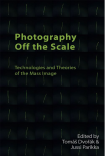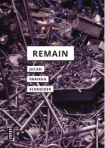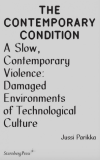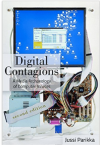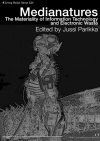“Sonic Alchemy”: an interview with Aleks Kolkowski
“Sonic Alchemy” – an interview with Aleks Kolkowski on his media archaeologically tuned sonic art methods
London-based musician and composer Aleksander Kolkowski occupies himself with the sound of the obsolete. This means working both with techniques and technologies of sound recording from past times, as well as investigating the nature of sound cultures through creative clashes between the old and the new. He has a long and extensive career as musician and performer, and has recently in his performances engaged with such technologies as Stroh instruments, wind-up Gramophones, shellac discs and wax-cylinder Phonographs. Aleksander Kolkowski also ran workshops at the Science Museum as part of the Museum’s Oramics-project.
composer Aleksander Kolkowski occupies himself with the sound of the obsolete. This means working both with techniques and technologies of sound recording from past times, as well as investigating the nature of sound cultures through creative clashes between the old and the new. He has a long and extensive career as musician and performer, and has recently in his performances engaged with such technologies as Stroh instruments, wind-up Gramophones, shellac discs and wax-cylinder Phonographs. Aleksander Kolkowski also ran workshops at the Science Museum as part of the Museum’s Oramics-project.
The interview (March 2011) w as conducted to elaborate Kolkowski’s artistic methods and interests, especially in relation to “media archaeology” as a creative form of crossbreeding and producing hybrids from old and new media innovations and artistic experiments. Juss i Parikka was affiliated with the Science Museum early this year as a short term research fellow, working on his new book on media archaeological theory and methods.
Jussi Parikka: Aleks, a big thank you for having the time to this interview. I am fascinated in how your work is very much embedded in old media – an inventive engagement with old recording technologies from wax-cylinders to gramophones and with instruments such as the Stroh violin. Why engage with old media? Can you tell a bit more about your “artistic methodology”?
Aleksander Kolkowski: Thank you for asking. I’m reminded of a quote by David Tudor, the New York avant-garde musician and John Cage’s muse, who in response to being asked about the then late ’80s electronic music scene said ” if you look at the background of the analog technology, there are marvellous things from two centuries ago that are worthy of being investigated.” For creative musicians, old recording technologies and related instruments are rich veins from which to draw from, but this has as much to do with current artistic practices and handling of modern technology as it has to do with an interest in the past.
In today’s culture, computers, turntables, electronic devises and smartphones can all be considered as ‘instruments’ for music-making, that’s to say they are being played with or manipulated, rather than passively emitting or processing sounds. Additionally, the noises produced by altered or malfunctioning media, be it hacked electronics, feedback, scratched records or skipping CDs, have been used as material by artists for sometime now. It’s in this same spirit of actively engaging and interfering with media technology and re-purposing it, rather than merely consuming it, that we can re-examine the media technology from the distant past and use it creatively. I’ll add that this has nothing to do with nostalgia, but with a belief that we can use these bygone technologies to offer an alternative perspective in our digital media-fixated society – to listen to the present through the pioneering audio technologies from well over a hundred years ago.
While there is a delight in playing with old machines and instruments, bringing them ‘back to life’ and engaging with the past through a mixture of research and practical experience, there is a feeling that this somehow challenges the very notion of their obsolescence. It has something to do with a reaction to consumerism and to the disposable nature of current media technology, its intangibility and limited shelf-life.
I began this work twelve years ago and I suppose it started as a personal response to the techno-fetishism that was prevalent in much of the experimental music-making at the time. Instead of electronic interfaces, I performed with wind-up gramophones, phonographs, and a mechanically amplified violin in unusual ways to make what sounded like contemporary electronic music, but using no electricity whatsoever. Since then I’ve been incorporating modern digital as well vintage analogue electronics in my work. Software programs have become important tools in my recent compositions and installation work where the historic and the modern are combined.
In a way, you work as a creative researcher, a historian, or an archaeologist, then?

Research played a part from the very beginning, investigating the origins of the Stroh violin is what really got me started on this journey. So histories to do with sound recording and its reproduction and early recordings became integrated in the fabric of the work I’ve produced at every level, from the concept stage, as narratives to provide structure right to the actual content itself, be it treating the first ever recordings of music as the basis for acoustic and electronic explorations or using the first morse code telegraph message to create rhythmic structures in a composition.
These creatively inspired explorations have actually led, in recent years, to more conventional, academic research (at Brunel University) into little known forms of mechanical amplification and an involvement with artefacts from museum collections in the UK and abroad.
You do not only tinker with old technologies but perform music with them live as well. How do people react to your work and instruments?
The reaction of audiences has had quite an important effect on my work. I found that people would marvel not only at the sight of these splendid old instruments and machines, but where captivated by the sound in interesting ways. Playing back a newly recorded wax cylinder on a phonograph to a modern audience is taken by many as a kind of sonic alchemy, and it requires a very different kind of listening than what we’ve all become used to. Rather than hearing a virtual copy, it’s closer to a memory of something. So it seemed possible to work with the relationship of sound and temporality by ‘ageing’ sounds using old technology, to be transported back in time, then forward to the present through the sound recording media of the past.
Do you think there is currently a wider artistic and sonic interest in going back to the pre-electronic age?
Probably not to the same extent as in literature, film or fashion, that’s to say the Steam Punk movement which has more to do with fantasy and science fiction. There are musicians releasing limited edition cylinder records, artists building machines, and composers utilising the pianola, but I’d mention the sound art of Paul DeMarinis to do with ‘orphaned technologies’ from the pre- and early electronic era as being the most significant example I can think of in this field. He is a true scientist of sound who has delved into seemingly obscure forms of communications technology and created some highly interesting and accessible works.
Certainly a lot has been published over the past few years concerning 19th century science, histories and theories of technology and communication, especially with regard to sound and the history of recording, which must be indicative of something, so yes, there is a wider interest, but then artists have always foraged the past. What’s special at this point in time, is the speed and severity at which digital media is replacing the analogue and which is conversely breathing new life into all forms older physical media, be it film, chemical photography, the cassette tape and even the wax cylinder.
I saw you recently (February 2011) do a workshop with the Science Museum together with Katy Price (Anglia Ruskin University). The workshop was part of a Science Museum Youth and Public Engagement to support their Oramics (Daphne Oram) project. Could you tell a bit more about this and the workshop where you recorded short pieces of creative fiction written by the students onto Edison cylinders and other old media?
In this case it was to show that the origins of Daphne Oram’s sound painting can be traced back to 19th century advances in capturing, visualising and reproducing sound through the phonoautograph and subsequently the phonograph and gramophone. We were also treating groove-based sound recording as a form of inscription, as sound-writing. It seemed fitting that the creative writing resulting from Katy’s sessions around the Oramics Machine and related artefacts in the Science Museum collection should be rendered onto physical storage media in this way. They could then be played back on the same cylinder phonographs and gramophones the participants had written about and even become objects that furnish an exhibition.
The fundamentals and science of sound recording are vividly demonstrated through mechanical devices, through objects you can touch and sound inscriptions you can see and hear played back via styli, vibrating diaphragms and horns. As well as showing how our forefathers experienced recorded music, it also offers us a different kind of listening experience as I’ve mentioned before. It helps us to examine our relationship to recorded sound, the antiquated sound-engraving processes add distance to the newly recorded voices, allowing us to reflect more profoundly on what we hear.
-
April 18, 2011 at 10:57 amGhostly reincarnations: an interview with Katy Price « Machinology
-
May 15, 2017 at 7:03 pm“Sonic Alchemy”: an interview with Aleks Kolkowski (from Machinology) | Portal / Portail (in development)


